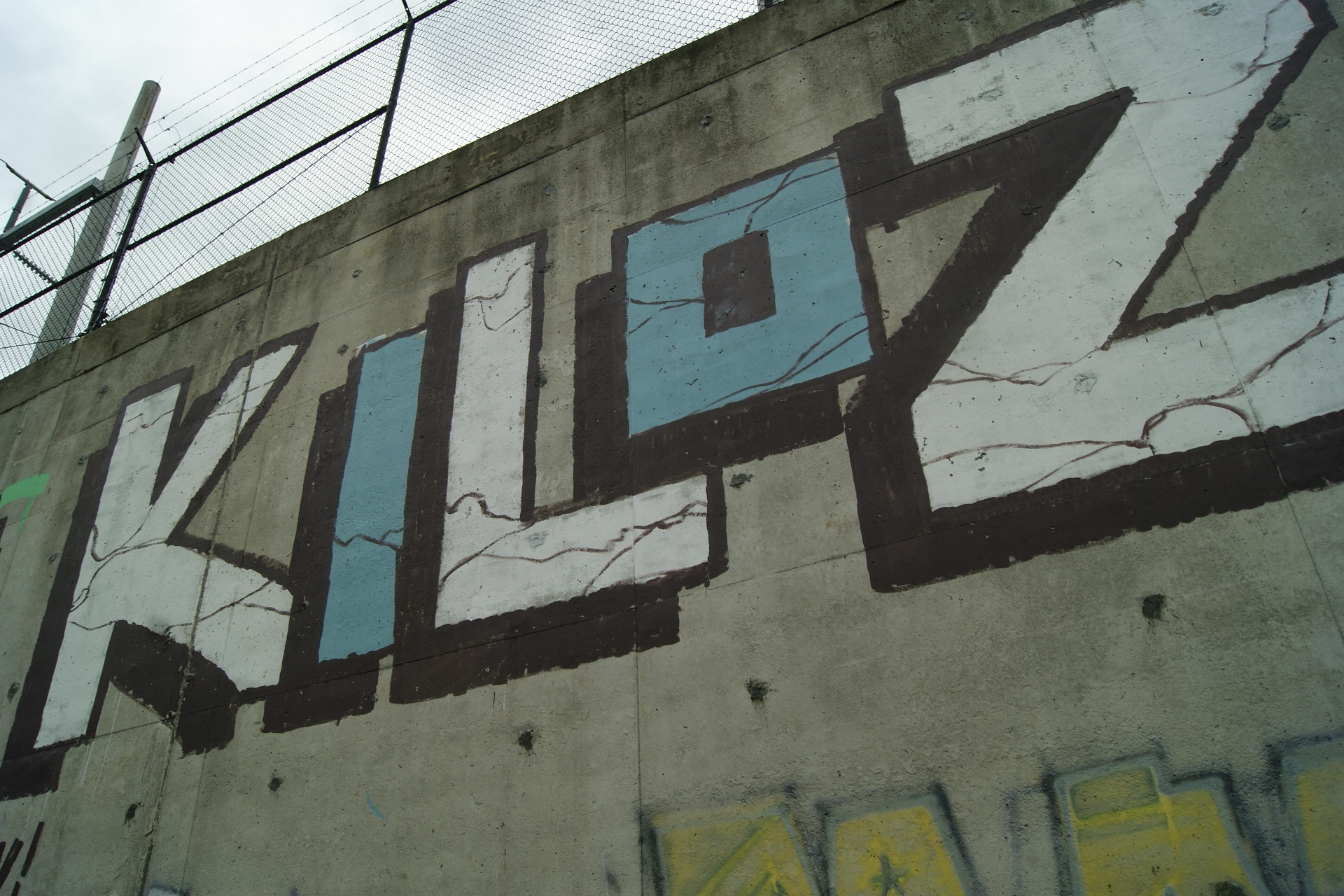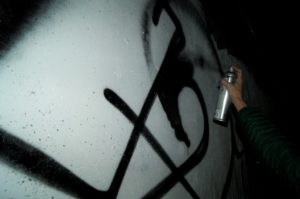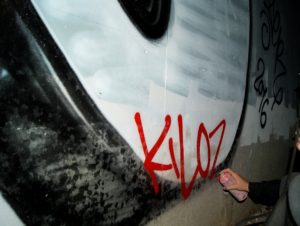
When thinking about what solidifies the aesthetic of any urban environment, one could say it’s the existence of vibrant colors and distorted signatures on the walls of the city buildings that do it, and that is what we call graffiti.
Graffiti has an unforeseen rich history behind its birth and the journey that lead to the contemporary expressionism seen on every block of the concrete jungle today.
According to widewalls.ch, Darryle McCray aka “Cornbread,” developed a crush on a girl named Cynthia in the 1970s. In order to grab her attention, he began plastering “Cornbread Loves Cynthia” all over town. After doing so, he had the realization that tagging was an enjoyment for him, so he continued to do it. He even tagged a jet plane that belonged to the Jackson 5.
However, the king of tagging went by the name of TAKI 183, and he made the art of tagging explode in cities everywhere during the 1970s. Once an article came out about TAKI 183 and his endeavours, kids decided to follow in his tracks and catapult graffiti tagging as the new trend. Soon, tagging became a competition to see who could put their names out in the world more, TAKI 183 started a movement.
It’s been a few decades since Cornbread and TAKI 183, but the world of graffiti writing is still alive. That is the case for Atlanta. This city holds some charismatic and revolutionary artists in its midst, and day by day they display their pieces to the world.

The underground writers
They are never seen, they are the hidden souls that transform walls into worlds, signs into messages and thoughts into viewable transcendence. They are the underground graffiti writers of Atlanta.
Each one of them began their journey with graffiti in different ways, and they have all developed their own memories with the craft, sometimes with the law enforcement. For this Atlanta writer, who wants to be referred to as P.*, found their niche after realizing what not to do.
“I got involved in graffiti as an early highschooler. I started just going around tagging things with shitty sharpies: signs, bathrooms…etc.,” P. said. “I just played around with my friends for fun. We slowly learned more about it. Eventually a few of my friends got caught writing on stuff. Ended up getting brought home in a graffiti abatement cops car, and got a talking to with their parents and the cop. All my friends lost motivation. I just kinda kept going. I saw the mistake they made. Eventually I met other people and really started going out and painting a lot. I really just fell in love.”
Other writers fell into the graffiti universe when recognition of their talent was made at a young age, and the access to the city and its inspirations were plentiful, whether it was previous work, other writers you meet within the realm or artists that most are utterly fascinated with.
“I got into graffiti at a young age, my dad lived in the inner city, and I started noticing it everywhere,” Kiloz*, a local graffiti writer said. “My biggest focus has been graffiti since I started. I do paint other things for private commissions or just to brush up on skills I feel like I don’t get to exercise during graffiti. Lots of my inspiration comes from the writers I hang out with, who I see as more talented than me. More recently as I’ve been studying art history, and I’ve been really interested in artists like Carvaggio and Van Gogh and the way they play with colors.”

The process
For some writers it’s all about location, location, location. However, others factor in different aspects when choosing where to bestow their talents, and then there are those who are unpredictable with it.
“A lot to finding spots is just walking around. [It’s] exploring and going to places where you wouldn’t go,” P. said. “Pieces usually end up under bridges, abandoned buildings and walls where it’s semi legal or legal to paint. I end up just looking for spots with visibility. You just got to gauge the amount of time you have to paint a spot, and paint what you can according to that. A large part of graffiti is walking or driving around, catching tags, throwies and just getting your name up.”
“I never plan shit out too much. I get some colors I think might go together and roam around until I find a spot or remember one,” Lucy,* another Atlanta writer said.
Kiloz, on the other hand, focuses on taking his time with his creations. He develops an understanding of the location, and then plans out what suits it best and what he is aiming for.
“Normally I’ll see a spot I like, either it’s really visible from a busy part of town or the exact opposite and it’s somewhere I feel like I can really take my time. After I know what spot I want, I usually draw a rough sketch at home and think about the smartest time to paint it,” Kiloz said.
When it comes down to deciding what the writers want for the end result, it requires tapping into their keen eye and determining what will look the most pleasing or make the most sense, design wise.
“Well I’m mostly into painting full on pieces, I like going big and having my stuff look really clean, aesthetically pleasing and cool to look at for me,” P said. “I really like to make sure that all my proportions are correct, my lines are straight and my colors are interesting. I like to try to change the game, make breakthroughs and do things that people don’t normally do.”
What makes it worth it
It’s no surprise that most graffiti is done illegally. The moments for writers to practice their art under permission is limited, however, the illegalness of the act doesn’t stop them from doing what they love. They have to put fear aside when becoming a graffiti writer, and embrace the rush.
“Doing graffiti is a blast for me. I love it, it’s a lot of fun. Even if I’m painting a legal wall. Putting those lines on a wall is extremely satisfying, and seeing a blank wall turning into something beautiful is an amazing feeling. I do it for personal reasons, satisfaction, fun, relaxation and improvement,” P said. “I love my crew and being involved with the community, getting love from the community and seeing my paintings around. Sometimes I don’t even do it for fun, I have a need to do it. Like sometimes it turns into a chore, but most of the time I love it. I will paint my name regardless, rain or shine.”
The probability of getting involved with the cops when being ia part of this world is high, it’s a risk every time a writer scouts a location and takes out their spray can or brush. The danger can be exhilarating as well as burdening, because the writer devotes themselves to the profession with every law-breaking masterpiece.
“[I’ve been through] so many chases, being arrested, talking my way out of handcuffs, painting commuter trains with a 6-7 minute time limit and painting giant things streetside, with cars flying by,” P. said. “I have countless stories of exciting times painting solo or with my friends. [Grafitti] is probably not something you wanna get involved with to be completely honest. It will change you as a person.”
With the sacrifice accounted for, the writers remain involved with graffiti for one main reason: it’s who they are. They have devoted their safety and time to their pieces, just for people in the city and around the world to be exposed to them. Every piece is a window to their thoughts, feelings and passions.
“What keeps me in graffiti is the feeling of driving by something I painted and just knowing you put your heart and soul into, and now everyone can see it. There’s something to be said about the community too, everyone you’re with has your back and you have theirs, which I think is rare in today’s world,” Kiloz said.
* Names in article have been changed to protect the identity of those in this story. Names used are aliases.
Graffiti lingo
- Bomb: To bomb or hit is when one paints many surfaces in an area. Bombers go quick, so they do more tags than full-blown pieces.
- All City: When a writer is well-known and their work can be seen throughout the city.
- Burning: A piece that hasn’t been removed and is still burning in its location.
- Gallery: A location that is generally not seen by the public and is only known by other writers. Being that its secluded, pieces stay for awhile and it accumulates enough to turn into a gallery viewing.
- Hollows: The outline or shell of a piece, it contains no inside “fill.”
- Massacre: When authorities completely cover up a wall or collection of pieces, leaving it blank.
*According to graffitiknowhow.com and translationdirectory.com
